2020 Civil War Travelogues — BGES Florida Symposium
Welcome to my 2020 travelogue pages. This is my report of the Blue and Gray Education Society symposium in Amelia Island, Florida, my 18th outing with BGES. It was a low-key affair scheduled on short notice so that we could accommodate a long-time BGES member and friend who has been too ill recently to attend our field events. (For privacy reasons, I won't mention his name, but everyone in BGES knows who I'm talking about.) Speakers volunteered their services to present on topics (usually) related to some of the missed events. Caveat: I went a day early and took a lot of animal photographs, completely unrelated to BGES or the Civil War, as well as an interesting Spanish fort. To see the entire list of my 2020 trips, go here.
| Here is a reminder about the reason I write these pages the way I do. They record my experiences and impressions of Civil War trips primarily for my future use. Thus, they sometimes make assumptions about things I already know and focus on insights that I receive. They are not general-purpose descriptions for people unfamiliar with the Civil War, although I sometimes link to various Wikipedia articles throughout. Apologies about the quality of interior photographs—I don't take fancy cameras with big flashes to these events. If you would like to be notified of new travelogues, connect to me via Facebook. |
Wednesday, January 22
I flew United Airlines to Jacksonville FL via Dulles and overnighted at the airport Hilton Garden Inn. As usual, it isn’t feasible for me to get to many east coast locations for a program that starts at 6 pm, so I had to fly out the day before. But also as usual, I was able to find activities to keep me busy before the formal start.
Thursday, January 23 — to Amelia Island
After a nice Cracker Barrel breakfast, I drove about 45 minutes to Saint Augustine to visit the Castillo de San Marcos. It is very well preserved by NPS for a place built in 1700 or so. It was constructed from a material called coquina, which looks like concrete with millions of tiny shells in it, and which acts much like sand forts in absorbing cannonballs without severe damage (unlike masonry forts). There was a siege by the British in 1705. By the time of the Civil War, it was called Fort Marion, and was turned over to the Confederates with a receipt to its lone occupant, an ordnance sergeant. It was taken without force by the Union in March 1862 after Robert E. Lee ordered the Florida forts abandoned . There were good lessons in such terms as portcullis, ravelins, bastions, etc., and a few short history movies including lengthy gunnery drills in Spanish. Well worth a visit. I found out later that there are three other NPS sites around St. Augustine, which I might have visited if I had done any prior research.
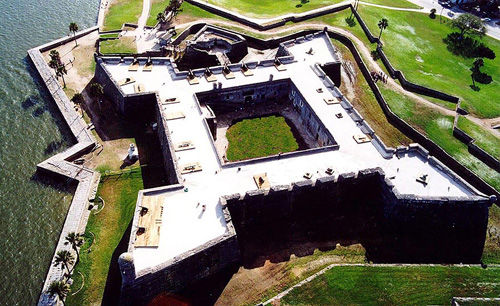
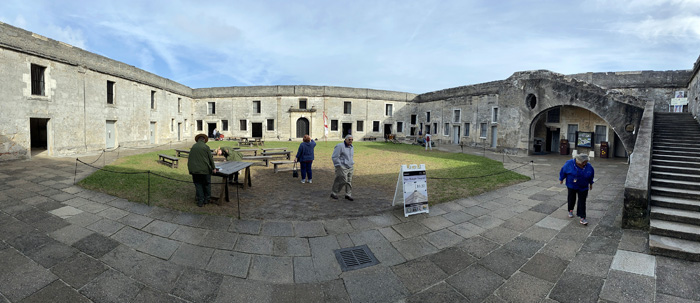
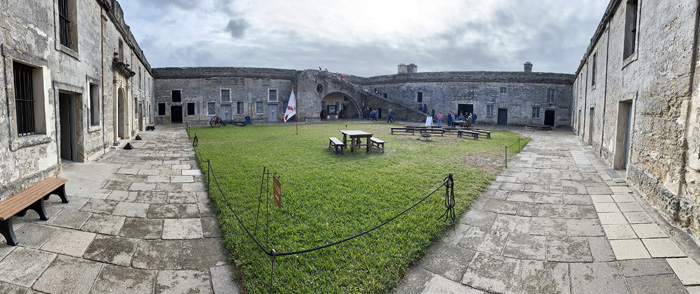

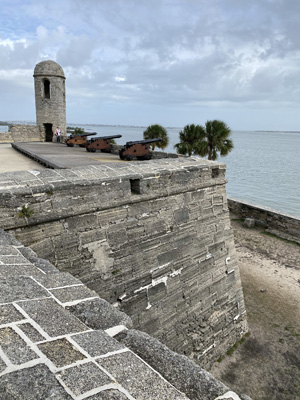
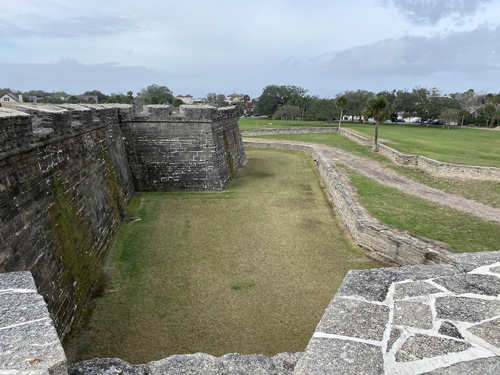
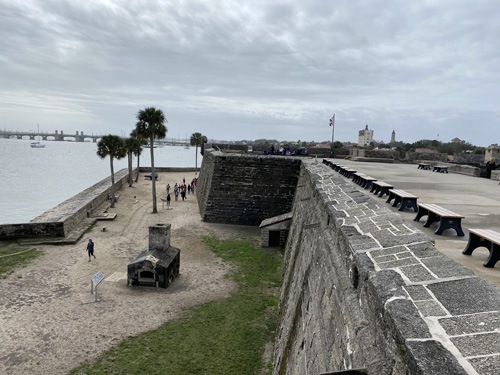
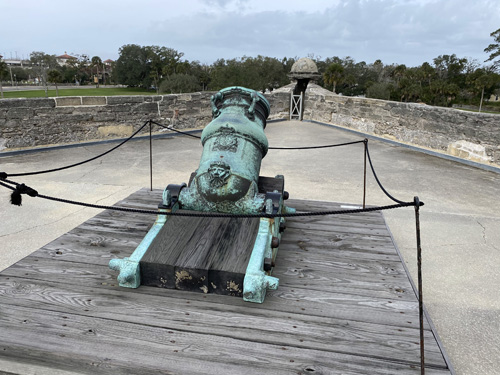
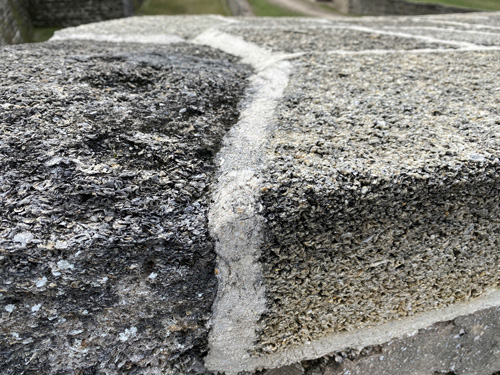
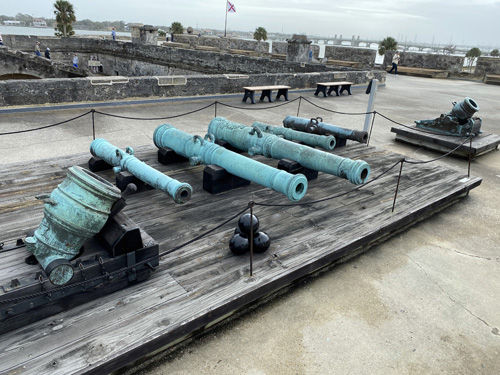
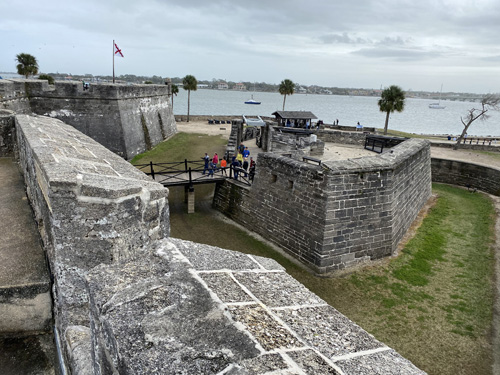
I drove up the coast to soak up some beach vibes, but it was blustery January weather, so didn’t get a good feeling for what it’s like the rest of the year. Instead I visited Catty Shack Ranch Wildlife Sanctuary, which is a small property a few miles northeast of Jacksonville that offers homes to abandoned or troubled big cats, all of whom were born in captivity. I took a 75-minute $12 tour that was quite nice, seeing a large number of Siberian Tigers (apparently all the rage for breeders, misguided homeowners, and shady zoos), some lions, leopards, pumas, bobcats, and servals. They also had some non-felines, including foxes and coatimundis. Some of these critters were not enjoying the chilly weather and had have heaters in their enclosures.
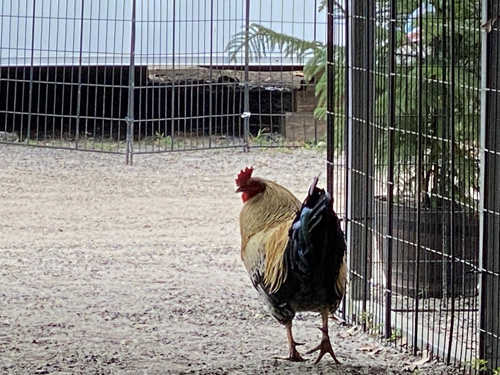
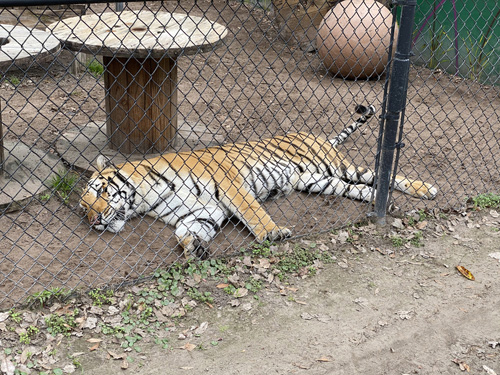
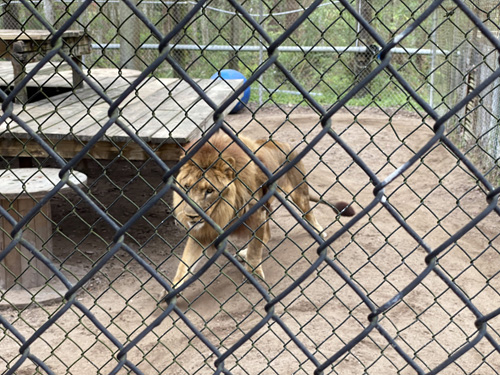
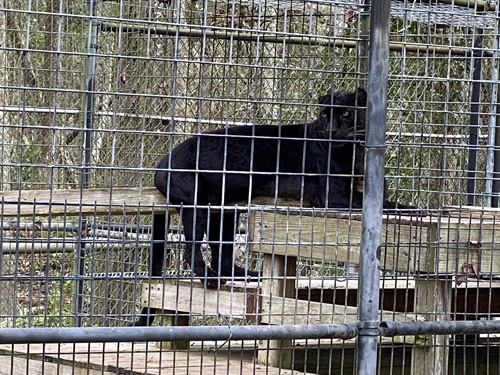
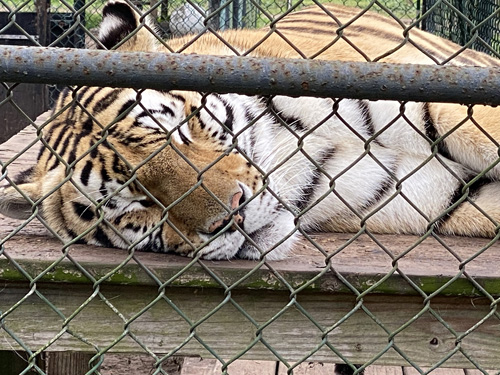
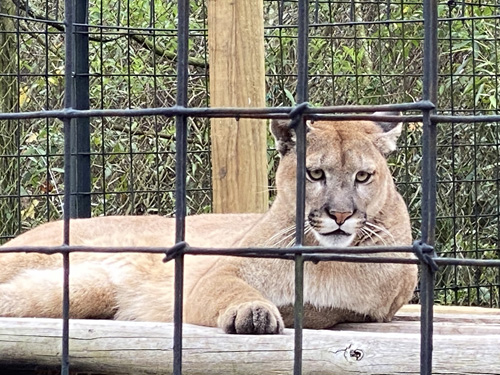
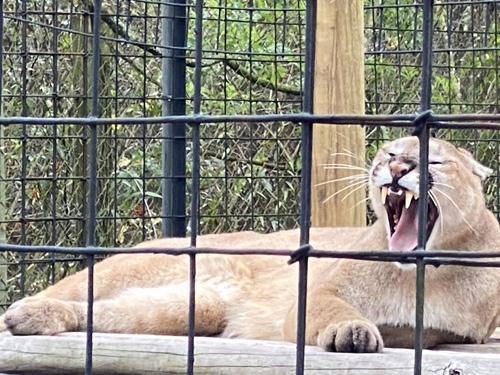
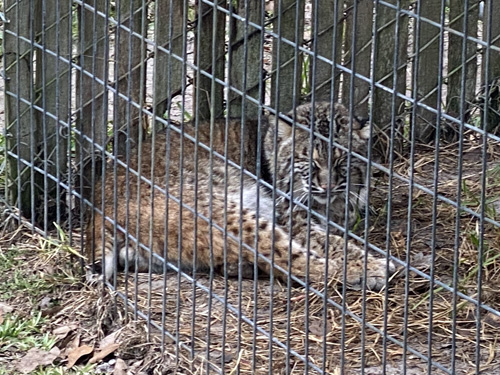
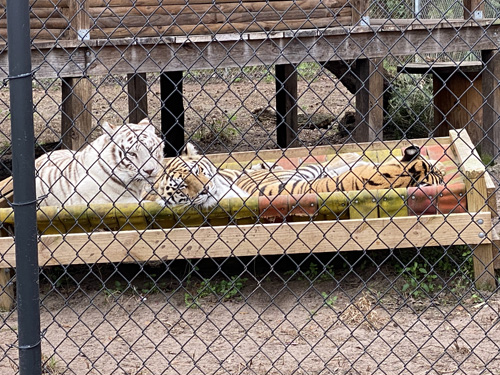
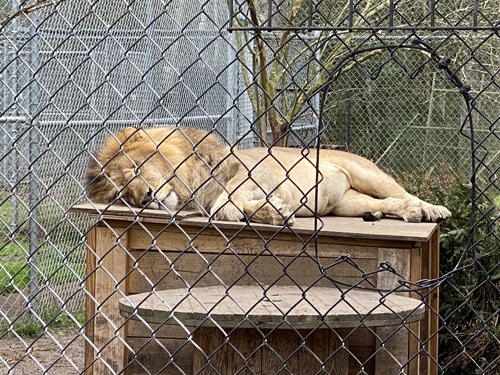
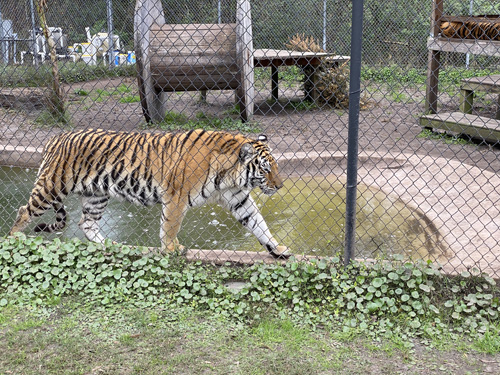
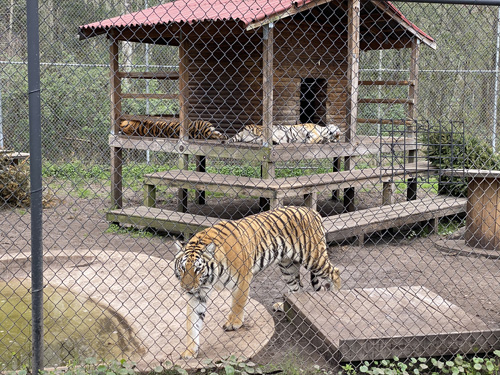
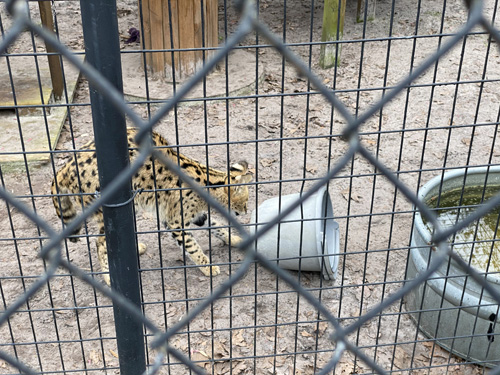
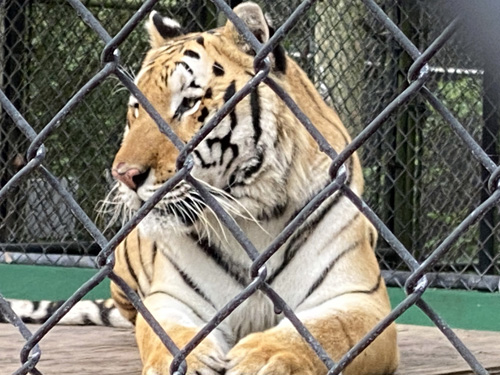
I checked into our group hotel, the Amelia Hotel at the [Fernandina] Beach, Amelia Island. After an intro by Len Riedel, our first presentation was Parker Hills about the H. L. Hunley, one of his typical animated PowerPoint extravaganzas, covering Hunley vs Housatonic and some of the predecessors in submarine and torpedo warfare. Afterward we broke up into small groups and walked to a few local restaurants.
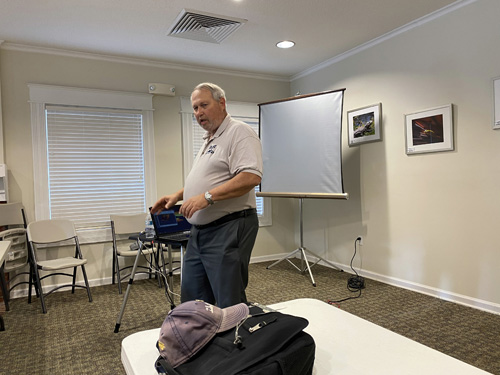
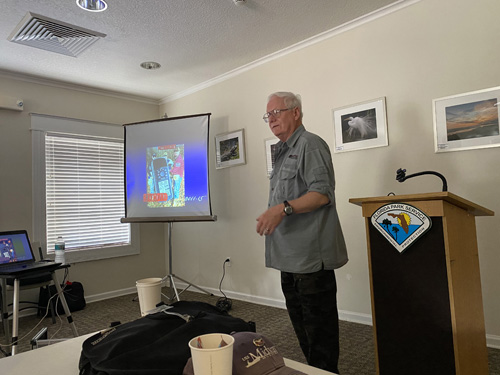
Friday, January 24 — Fort Clinch
We carpooled a few miles north to Fort Clinch State Park, where we reserved a meeting room in the visitor center. The first lecture was by Len Riedel, on whether the South could have won the war. His premise was that there was a very short window for military victory, from after Fort Sumter to mid-January 1862, but any chance failed after Prince Albert convinced Queen Victoria to back off intervention after the Trent Affair.
Next was Parker Hills again, who presented for two hours about archeology at, and restoration of, the Raymond MS battlefield. I had seen this before and didn’t learn much new, but I later remarked that he has enough material here to write a book on the subject of building a battlefield.
After a catered sandwich lunch we had Steve Hood describe the circumstances of his discovery of the lost personal papers of John Bell Hood and he presented scanned images of a number of interesting letters, discussing their significance. He asserted that he had evaluated Hood’s memoirs, Advance and Retreat, and contrary to conventional wisdom, found no actual falsehoods or significant errors. This was also a two-hour presentation.
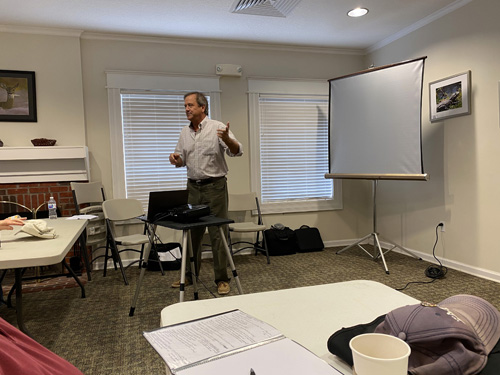
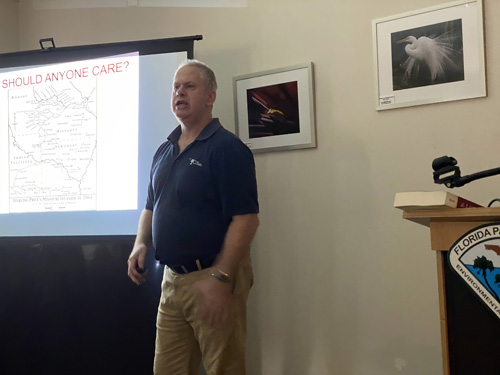
Our final today was Kyle Sinisi, a history professor at the Citadel, who presented a very detailed look at Price’s Missouri Raid; Kyle used the term invasion because Price was definitely intending to raise supporters and occupy Missouri, reclaiming it for the Confederacy. He covered a lot of the personnel involved—including a black bear the Rebs brought along as a mascot—and went into the tactical details of a number of the battles along the way.
We were on our own for dinner, but almost all ended up going to a touristy seafood place called Down Under (because it was underneath the bridge to the island), which was pretty decent and quite crowded for a winter evening.
Saturday, January 25 — Fort Clinch
Back at Fort Clinch, Parker Hills started with a 2.5-hour presentation about Grant’s assaults on Vicksburg, May 19 and 22, 1863. This was a very effective PowerPoint with a strong emphasis on accurate terrain maps that Parker drew himself and useful animations of regiments assaulting over that terrain. Although he considers the overall Vicksburg campaign to be brilliant, Parker had serious criticisms of Grant’s leadership of these failed assaults.
We had a yummy lunch of Philly cheesesteaks and then got an hour to explore the actual Fort Clinch, which is a nicely maintained Third System fort protecting the St. Mary’s River, which is also the FL–GA state line. It was unfinished when the Confederates pulled out in March 1862, so the Union troops had to scramble a bit to get it into shape. The weather is finally nice—sunny and not too cold. There were a number of cool 10-inch Rodman Columbiads on the parapet and various rooms were decorated/equipped with period furnishings. Len got them to open up a locked warehouse in which the BGES-sponsored 10-lb Parrott Rifle (in firing condition) is stored. No demo was offered.
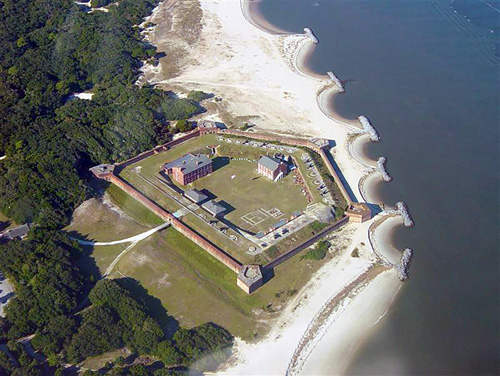
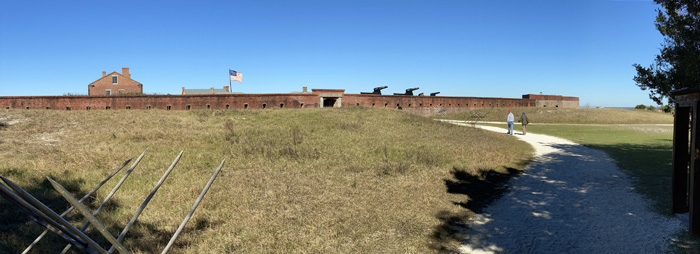
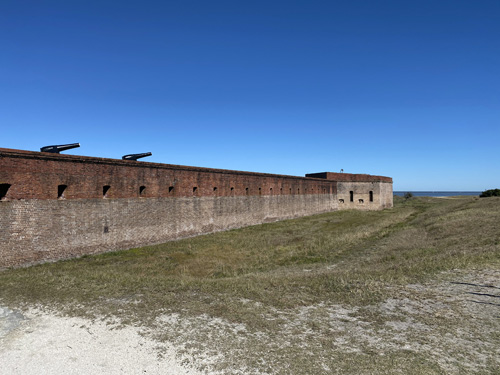

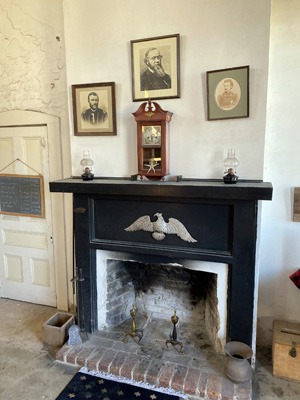
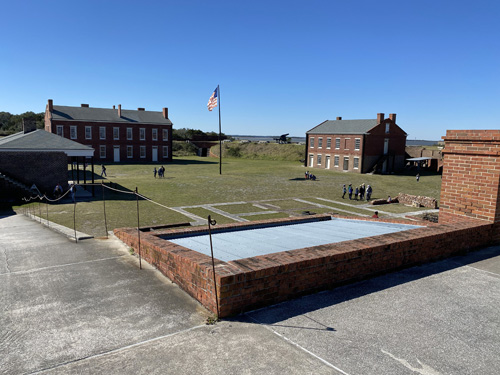
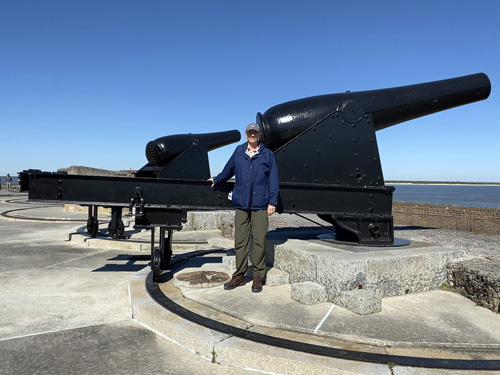
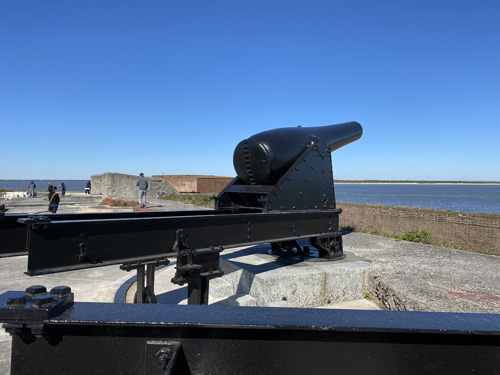
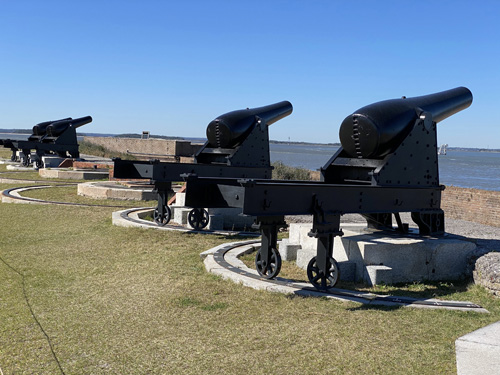
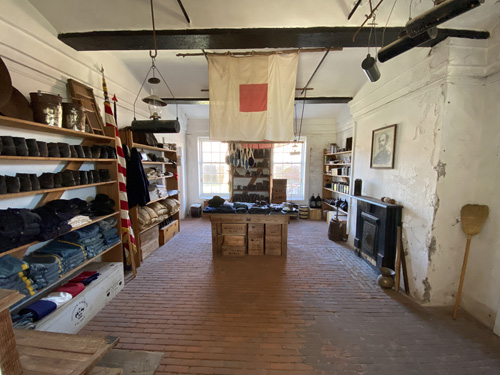
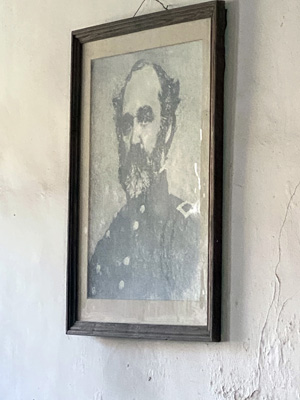
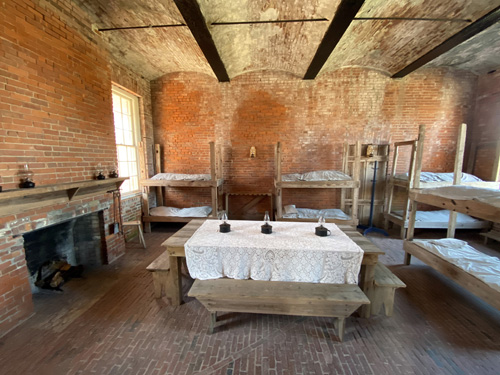
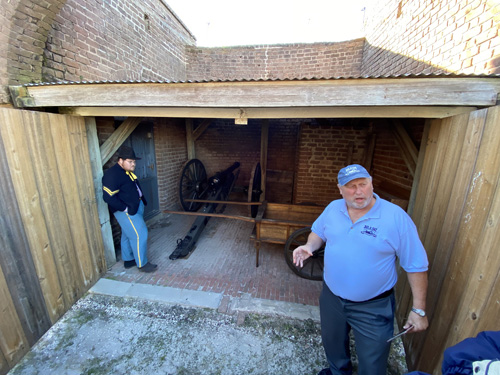
Sam Hood presented on the subject of his forthcoming book, a list of Confederates who became prominent civilians after the war, founding universities, being politicians, engineers, etc.
Kyle Sinisi returned for a presentation on the life of Samuel R. Curtis. Kyle says there are no full biographies of him available, so he’s doing one, and we could see that his research is incomplete, but he has amassed quite a bit of information. Curtis left reams of letters and diaries, so that’s a big help. Kyle ran out of time to devote much attention to Curtis’s two big victories, Pea Ridge and Westport.
We drove downtown to historic Fernandina Beach and Len hosted us at the Crab Trap restaurant, which turned out to be quite good. Len had planned to do a lecture on John B. Magruder after dinner, but we dissuaded him.
Sunday, January 26 — Olustee
We drove by van to Baldwin to start our examination of the 1864 Florida campaign. Len described the political situation in which Lincoln wanted to start reconstructing Florida and ordered Quincy Gillmore to land a force at Jacksonville. In Baldwin, Gillmore instructed Truman Seymour to establish a cantonment area around Jacksonville, but do not move west without permission. Seymour foolishly defied this and marched about half of his 12,000-man force west toward Lake City, aiming to destroy the railroad bridge over the Sewanee River.
In Maccleny, we stopped at the Veterans Park to discuss the battle of Barber’s Plantation, in which the Confederates ambushed the advancing Union cavalry. Then we stopped briefly at a roadside marker in Sanderson, where both sides had camps (at different times).
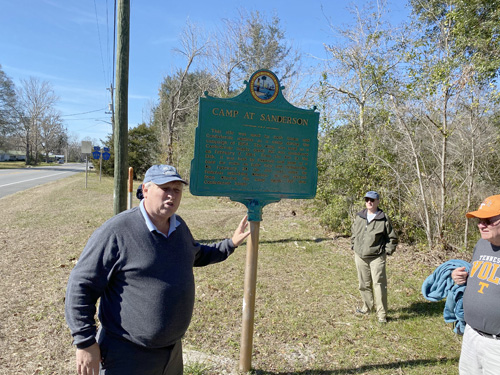
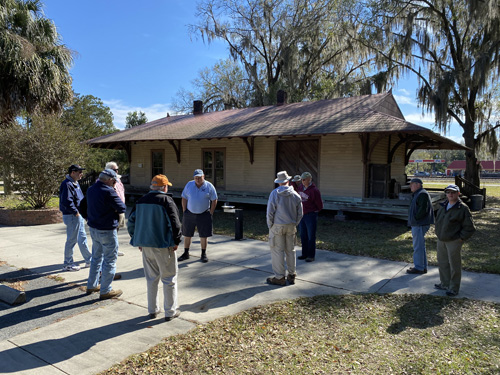
We had a bag lunch at the Olustee battlefield picnic area and then drove nearby to the Olustee train depot and discussed the disposition of forces, including the Confederates under Joseph Finnegan, and how the latter planned to lure the advancing Union force into attacking them in prepared positions south of Ocean Pond. We found some of their earthworks around Pine Street, although it seemed very likely that they had been enhanced by reenactors.
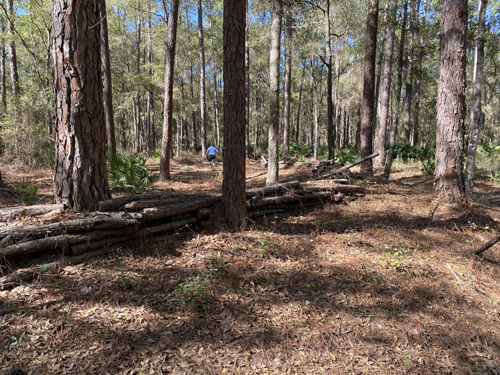
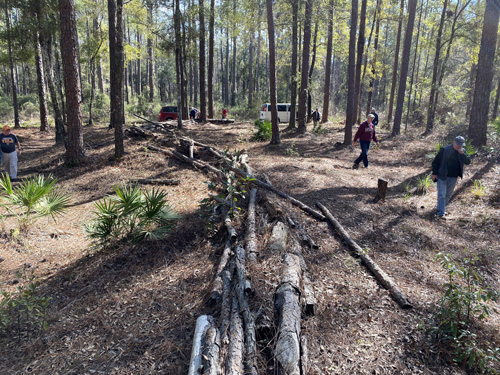
Back at the battlefield park, we discussed the actions that actually happened farther east than Finnegan intended. There is a one-mile walking trail that has interpretive markers, but they are arranged in time sequence, not keyed in to the locations on the field, so taking this journey is really just a matter of exercising, not analyzing. There is a small visitor center with a video and a few displays, and outside there is a monument, which I judge to be one of the most unattractive I’ve seen. Then it was back to Amelia Island, about 90 minutes.
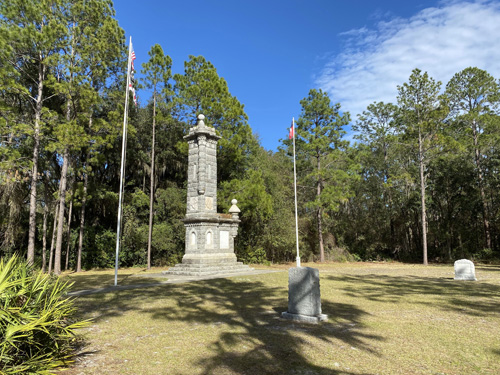
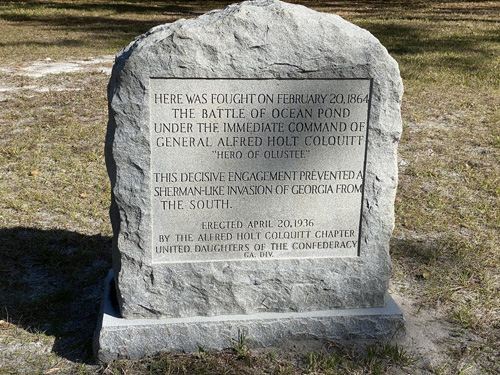
We had a dinner with almost all in attendance to visit with our ill comrade, a Thai restaurant called Green Papaya near the JAX airport. Excellent meal and a very nice closing event for our symposium.
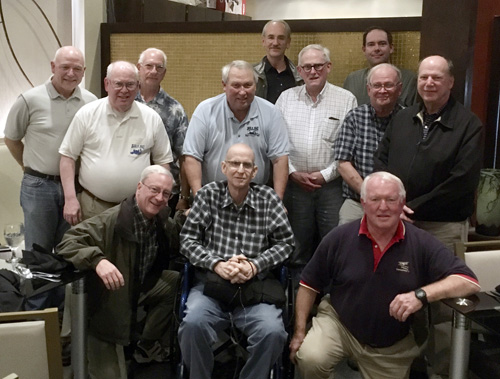
Monday, January 27 — home
I flew United back home, this time an early morning flight though Houston. This was a low-key conference and tour, and I enjoyed it quite a lot, so hope more are arranged in future years.